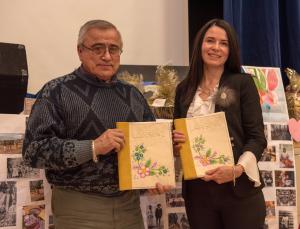
As a fur trading hub, Lansing Post contributed significantly to Yukon’s history and represented a blending of Indigenous and non-indigenous cultures. By preserving these stories we acknowledge the past and work together to build a better Yukon moving into the future. I would like to thank those who took the time to attend community open houses, public meetings, and otherwise share their comments and insights in the creation of this plan.
Minister of Tourism and Culture Jeanie Dendys
Our people have been connected to this land for a long time and travelled throughout this area. Lansing Post was an important place, and was a big part of our history and how people moved about on this land. Our people were born there, our people were buried there. It was an important place for gatherings and meeting up with our relations from the Gwich’in and Slavey communities. And those connections remain strong. And we will continue to teach our young people about the importance of this area.
First Nation of Na-Cho Nyäk Dun Chief Simon Mervyn
The Lansing Post Heritage Site is located at the confluence of the Lansing and Stewart Rivers, approximately 120 kilometres east of Mayo.
2018 marks 25 years since the Umbrella Final Agreement was signed. The First Nation of Na-Cho Nyäk Dun Final Agreement came into effect in February, 1995.
The Government of Yukon and the First Nation of Na-Cho Nyäk Dun jointly developed the heritage management plan through the Lansing Steering Committee, fulfilling Schedule A (Lansing Heritage Site) Chapter 13 of the First Nation of Na-Cho Nyäk Dun Final Agreement. Development included public open houses in Mayo and Whitehorse, an online survey to collect feedback, and draft plan presentations.
Research that informed the plan included historical analysis, archival records, archaeological assessment, an investigation of the resources found on site, previously collected Elders’ oral history, and consultation with the community.